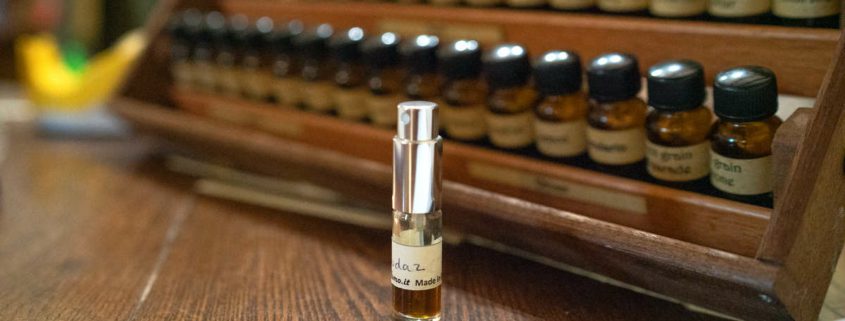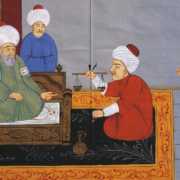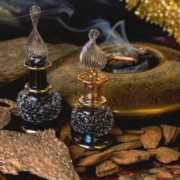How to Make Your Own Natural Perfume at Home: Embrace the Essence of Nature

The use of good smells as perfumes dates back to the dawn of human civilization. However, the modern perfumes available to us contain mostly synthetic chemicals that can be harmful to both our health and the environment. The best alternative to commercial perfumes is to make your own natural fragrances at home with natural essences available online. It is very easy. This blog post will guide you through the process of making a unique and eco-friendly scent that emanates your personality with the real smells of nature.
Table of Contents
-
Understanding Natural Perfumery
-
What you need
-
Create Your Perfume Formula
-
The Blending Process
-
Fixatives
-
Dilution and Maturity
-
Bottling and Storage
Understanding Natural Perfumery
Natural perfumery means using only natural ingredients, such as essential oils, absolutes, and extracts derived from flowers, herbs, spices, and other natural sources. These ingredients not only offer the most beautiful fragrances but also boast therapeutic properties that can heal, cure, uplift your mood, and soothe your mind. Making your own natural perfume allows you to stand out with a one-of-a-kind fragrance that reflects your personality.
What you need
Before you embark on your natural perfume-making journey, gather the necessary materials. Here’s what you’ll need:
- Essential Oils: These are the foundation of your perfume and provide the main fragrance notes. Choose essential oils that resonate with your heart and life story. Some popular options include rosewood, patchouli, bergamot, ylang-ylang, and sandalwood.
- Carrier Oil: A carrier oil is used to dilute your perfume. Jojoba oil, sweet almond oil, or fractionated coconut oil are excellent choices. A good carrier oil should have no smell.
- Alcohol: Selecting the right alcohol is crucial for creating a good perfume. The best is pure NON denatured 95° grain alcohol. A good alcohol should have no smell.
- Perfume Bottles: Choose beautiful bottles that your beautiful perfumes deserve.
- Dropper: A dropper will help you measure the essential oils accurately during the blending process. Usually, essential oils are sold in dropper bottles
- Funnel: A funnel will make it easier to pour your perfume mixture into the bottles without spilling.
- Blotter Strips: These strips are useful for testing and evaluating the fragrance during the blending process. Cigarette papers are a cheap alternative.
Step 2: Create Your Perfume Formula
Making perfumes is different from whatever you imagine: it is not just about using the nose, but also the brain. The nose is only used at the end of the process to assess the result.
As a beginner, you are most likely going to make soups instead of perfumes. You know how is a soup. You put everything in it, carrots, potatoes, onions, garlic, herbs, meat, and whatever you fancy. It is good and nutritious, but it is not a dish of a five-star restaurant. Not a real perfume, not a message in a bottle, not a story translated into smell.
Be sure that your good soup will always be way superior to any of the commercial chemical perfumes.
Step 3: The Blending Process
Guy Robert is a maximum authority in the scene of perfumery. He is the author of Madame Rochas, Caleche, Equipage, Gucci Parfum and Dioressence.
This is a transcript of his lecture to his colleagues at the British Society of Perfumers
Our art is so mysterious, most of the perfumers cannot explain the proceedings they use to build a perfume.
Our method could be compared to the Art of Cooking, a sort of “rule of thumb”
(empiricism), and I agree this is not looking very serious!
Who can teach you how to make perfumes? Certainly not “most of the perfumers”.
This is why I advise beginners to start by executing formulas that are easily found in old books of perfumery from the beginning of the century when perfumes were still natural.
Here is the link to Dussauce book: https://naturalnicheperfume.com/dussauce/
Step 4: Fixatives
Guy Robert says:
Lasting power is not easy to reach, nobody knows how and why this is happening.
I hate and find stupid that theory of “fixateurs”.
We all know these many little songs we are hearing anywhere and forgetting almost immediately, but, from time to time, one of these songs sticks to our ear and we go on whistling it the whole day … I can assure you the author of these successful songs do not use any “fixatives ingredients” to get that result …
Do not believe those who sell you miraculous fixative ingredients. They surely know less than Guy Robert about making perfumes.
Again I would advise beginners to start by executing formulas from the Dussauce book.
Step 5: Dilution and Maturity
Let your blend rest for a few days before bottling it. During this time, the different essences will blend and mellow.
Dilution should be at your pleasure: it can range from pure to 5% of essence. Take note that the concentration in carrier oil should be higher than with alcohol to have the same effect.
Step 6: Bottling and Storage
Once your perfume has matured for a few days, and you have decided on the carrier and dilution, use the funnel to carefully pour it into your bottles. Seal the bottles tightly and store them away from direct light to preserve the fragrance’s integrity.
Diluting your natural perfume with alcohol is definitely the best way. Perfumes in carrier oils are less powerful at the same concentration. They also stain the clothes and need a special bottle with a dipstick. Alcohol is best for conservation as well. Natural perfumes in carrier oils will oxidize with time and the oil will become rancid.
In some countries pure alcohol cannot be easily found, that is when you will use a carrier oil or use your blend pure, as an attar, which is even better.
You may also choose to use a carrier oil if you want to use your perfume in a massage or body oil.
Conclusion
Making your own natural perfume at home is a rewarding and creative experience that allows you to escape the world of synthetic fragrances. By harnessing the power of botanical ingredients, you not only create a unique scent that reflects your personality but also contribute to a more sustainable and eco-friendly approach to perfumery.
As you delve into the art of natural perfumery, you’ll gain a deeper appreciation for the beauty of nature and its ability to inspire captivating scents that enchant and delight the senses. So, leap into the world of natural perfumery and let the essence of nature embrace you.
To begin making straight away good perfumes, start by executing classic formulas of perfumers, then you can customize them to your liking, and with a bit of experience, you will be able to make your own perfumes entirely.
Start composing your natural perfumes with our Perfume Making Kit
Enroll in our Perfume Course
























Leave a Reply
Want to join the discussion?Feel free to contribute!